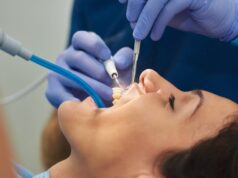
Visiting a dentist for the first time can feel overwhelming. I understand the anxiety that may arise, and I’m here to guide you through what to expect. A dentist in Burlington will begin with a warm welcome. The receptionist will ask for basic information to set up your record. Once you’re settled, the dental assistant escorts you to the examination room. Here, you meet the dentist who will evaluate your oral health. The dentist will ask about your dental history. They will also inquire about any discomfort or concerns you might have. Expect a thorough check-up that includes examining your teeth, gums, and mouth. X-rays might be taken to get a complete picture of your dental health. The dentist will then discuss the findings and suggest any needed treatments. Most importantly, the goal is to ensure you feel comfortable and informed throughout the process.
Understanding the Dental Examination
During the dental examination, the dentist checks for cavities, plaque, and tartar on your teeth. They will also assess the health of your gums. Healthy gums should be firm and pink. The dentist uses a small tool to measure the depth of the spaces between your teeth and gums. This helps identify any signs of gum disease. They might also perform an oral cancer screening by checking your throat, tongue, and neck for any unusual signs.
The Role of X-rays
X-rays are an essential part of the dental visit. They help the dentist see issues that are not visible during a regular examination. This includes problems with the jawbone, impacted teeth, or tooth decay between teeth. X-rays are safe and involve minimal radiation exposure. The dentist will decide the type of X-ray needed based on your age, risk of disease, and any symptoms you may have.

Common Types of Dental X-rays
| Type of X-ray | Description |
|---|---|
| Bitewing | Shows details of the upper and lower teeth in one area. Used to detect decay between teeth. |
| Periapical | Provides a view of the entire tooth, from crown to root. |
| Panoramic | Offers a broad view of the entire mouth, including the jaw, teeth, and nasal area. |
Discussing the Findings
After the examination and X-rays, the dentist will discuss the findings with you. They will explain any issues and recommend a treatment plan if necessary. This may include scheduling cleanings, fillings, or other procedures. The dentist will also advise you on maintaining good oral hygiene. This includes proper brushing and flossing techniques, as well as dietary recommendations.
Building a Routine for Dental Care
Regular dental visits are part of maintaining a healthy mouth. The American Dental Association recommends visiting the dentist at least once every six months. Routine care helps prevent oral health problems before they start. You can learn more about oral health guidelines from the Centers for Disease Control and Prevention.
Addressing Anxiety and Concerns
If you feel anxious about your dental visit, share your concerns with the dentist. They can offer solutions to help you feel more comfortable. Techniques such as breathing exercises or listening to music during the appointment can help. Some dental offices also offer sedation options for those who need them.
Understanding Costs and Insurance
Before the appointment, check with your dental insurance provider about coverage for exams and X-rays. Understanding your benefits can help avoid unexpected costs. If you are self-paying, ask the dental office about payment options or plans. The USA.gov website provides resources for finding dental care at reduced rates if needed.
Conclusion
Your first visit to a general dentist is an important step in maintaining oral health. Understanding what to expect can ease any worries and help you feel prepared. By keeping regular appointments and following the dentist’s advice, you can ensure a healthy smile for years to come.









